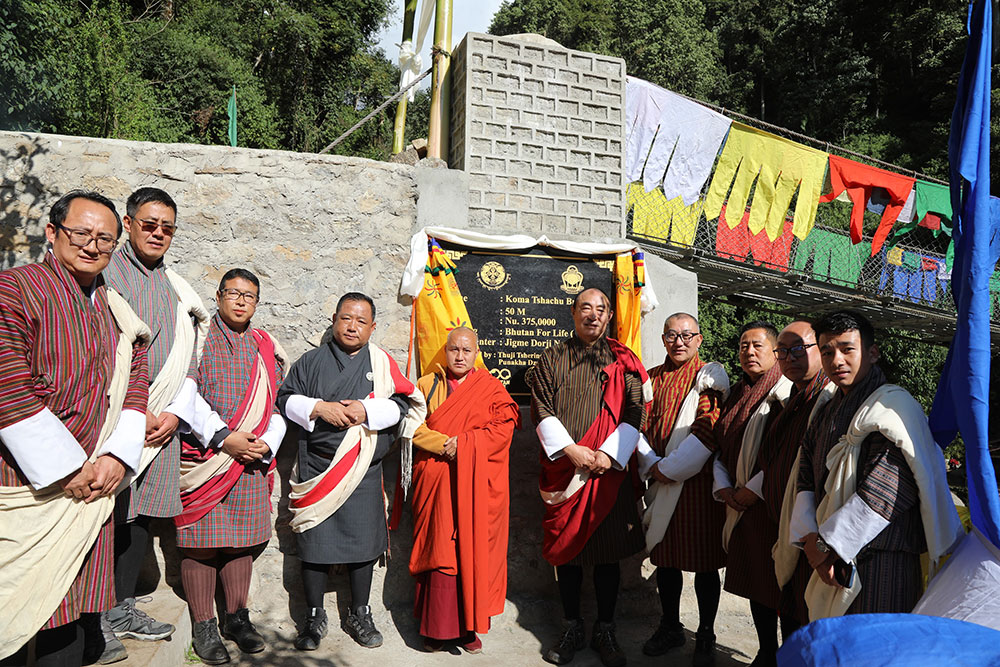YK Poudel
A new 50-metre suspension bridge, designed to improve visitor accessibility to Koma Tshachu (hot spring) and support the local economy of Goenshari Gewog in Punakha, was officially opened to the public on November 25.
The construction of the bridge, along with other amenities, was made possible with a funding assistance of Nu 3.7 million from the Bhutan For Life (BFL) programme.
The project was executed by the Jigme Dorji National Park (JDNP) under the Department of Forests and Park Services in collaboration with the local government and Punakha dzongkhag administration.
The old bridge

According to BFL, the new bridge replaced the aging wooden structure that required frequent repairs, providing a more durable and reliable solution for the approximately 21,000 annual visitors who travel from across Bhutan to experience the therapeutic hot springs of Koma Tshachu.
Located within JDNP, Koma Tshachu is one of Bhutan’s oldest and most culturally significant hot springs. Believed to have been blessed by Guru Rinpoche in the 8th century, the site holds deep spiritual and cultural importance for Bhutanese people.
Visitors come to experience the healing benefits of the hot springs, which are said to alleviate ailments such as digestive issues, skin diseases, migraines, paralysis, gout, and aid in the recovery from fractures.
Many also report a general sense of rejuvenation after soaking in the mineral-rich waters.
Lemo, a 71-year-old visitor, said that the old wooden bridge was a constant concern, especially for elderly people. “Now, we can travel without fear, knowing that it provides a safe and reliable way to reach the hot springs.”
The Koma Tshachu site is also a vital economic asset for Goenshari gewog.
According to Wangchuk, the Gup of Goenshari gewog, the new bridge will significantly improve access for visitors while supporting the local economy.
“This infrastructure improvement will bolster eco-tourism in the gewog, creating new income-generating opportunities for local communities and enhancing their resilience to climate change,” he said.
The hot spring site, managed by the Goenshari gewog administration, generates an annual income of approximately Nu 700,000, which is reinvested into the construction and maintenance of essential amenities, ensuring the sustainability of the site and enhancing visitor experience.
This post was originally published on here







